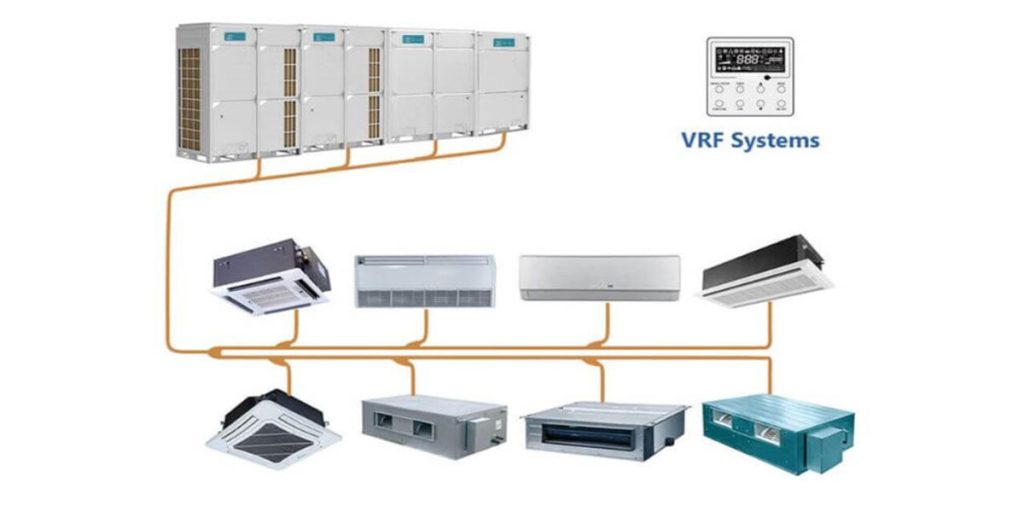
Variable Refrigerant Flow (VRF) is an advanced HVAC system technology that provides precise temperature control by adjusting the flow of refrigerant to different indoor units. It’s commonly used in commercial buildings, large homes, and multi-zone environments where varied temperatures are needed in different areas. VRF systems are highly energy-efficient, making them popular for modern and green building designs.
How VRF Works
In a VRF system:
- Central Outdoor Unit: The system has one or more outdoor units that contain compressors. These compressors can adjust their output to match the heating or cooling needs of the building, unlike traditional systems that only turn on or off.
- Indoor Units: Each indoor unit in the building (such as wall-mounted, ceiling cassette, or ducted units) connects to the outdoor unit and can be individually controlled.
- Refrigerant Flow Control: By varying the refrigerant flow, the system can simultaneously heat one area and cool another, using a heat pump or heat recovery system.
Types of VRF Systems
- Heat Pump VRF: Can either cool or heat the entire system at one time. Suitable for open areas where only heating or cooling is required at any given time.
- Heat Recovery VRF: Allows simultaneous heating and cooling in different zones. Ideal for buildings with different climate needs, like hotels or office buildings, where one part might need cooling and another heating.
Advantages of VRF Systems
- Energy Efficiency: Only delivers the precise amount of refrigerant needed for each indoor unit, reducing energy consumption.
- Zoning Flexibility: Can control temperatures in individual areas, making it possible to customize the climate in each room or zone.
- Quiet Operation: VRF systems operate quietly due to inverter-driven compressors and the flexibility of refrigerant flow.
- Space-Saving: Requires less ductwork and infrastructure, which is especially helpful in buildings with limited ceiling or wall space.
Disadvantages of VRF Systems
- Higher Initial Cost: Installation can be expensive compared to traditional HVAC systems.
- Complex Installation and Maintenance: Requires skilled technicians and more specialized maintenance.
- Limited Range in Cold Climates: Some models may be less effective in very low outdoor temperatures, though newer designs are addressing this.
Applications of VRF Systems
VRF systems are ideal for:
- Large commercial buildings
- Hotels and hospitals with individual climate control needs
- Multi-story residential buildings
- Schools and educational campuses
VRF systems provide flexibility, efficiency, and high comfort, making them well-suited for buildings with diverse temperature requirements and a focus on energy savings.
